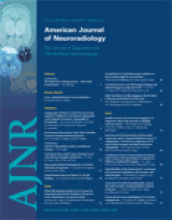Abstract
BACKGROUND AND PURPOSE: To prospectively determine the sensitivity in the detection of multiple sclerosis (MS) lesions by using double inversion recovery (DIR), fluid-attenuated inversion recovery (FLAIR), and T2-weighted turbo spin-echo (T2 TSE) MR imaging at 3T.
METHODS: Seventeen patients presenting with a clinically isolated syndrome (CIS) suggestive of MS, 9 patients with definite MS, and 6 healthy control subjects were included. Imaging was performed on a 3T MR system using DIR, FLAIR, and T2 TSE sequences. Lesions were counted and classified according to 5 anatomic regions: infratentorial, periventricular, deep white matter, juxtacortical, and mixed white matter-gray matter. The sensitivity at DIR was compared with the corresponding sensitivity at FLAIR and T2 TSE sequence. The contrast between lesions and normal-appearing gray matter, normal-appearing white matter, and CSF was determined for all sequences.
RESULTS: Because of higher lesion-white matter contrast, the DIR showed a higher number of lesions compared with the FLAIR (7% gain, P = 0.04) and the T2 TSE (15% gain, P = 0.01). The higher sensitivity was also significant for the infratentorial region compared with the FLAIR (56% gain, P = 0.02) and the T2 TSE (44% gain, P = 0.02). Compared with the FLAIR, no significant changes of the lesion load measurements were observed in the supratentorial brain: slightly higher numbers of periventricular and mixed gray matter-white matter lesions on the DIR were counterbalanced by a slightly reduced sensitivity regarding juxtacortical lesions.
CONCLUSION: DIR brain imaging at 3T provides the highest sensitivity in the detection of MS lesions especially in the infratentorial region.
- Copyright © American Society of Neuroradiology












